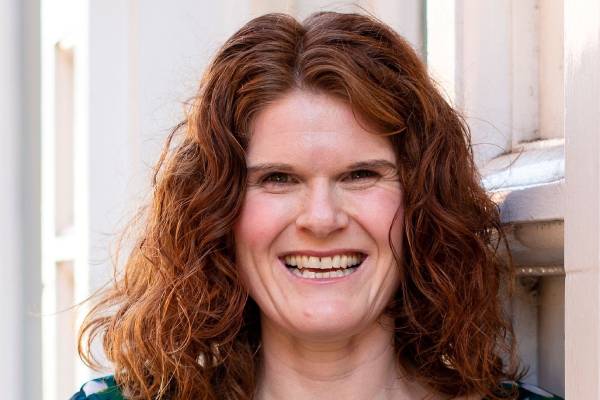Authored by Certified Business Psychologist Laura Howard. Certified Business Psychologist, Laura Howard, reflects on the webinar she recently delivered to ABP members. Below she outlines the main findings of her published research uncovering systematic barriers women face when being authentic as leaders. Importantly, she gives…

Professor Ludmila Praslova, Vanguard University of Southern California
Professor and Founding Director of Graduate Programmes in Industrial/Organisational Psychology
By way of introduction, Prof Praslova undertakes consulting work focused on supporting organisations in creating systemic inclusion informed by an understanding of neurodiversity. She has also authored a book “Evidence-based organisational practices for Diversity, Inclusion, Belonging and Equity (to be published by Cambridge Scholars), and is in a unique position to provide a perspective on our current understanding. This note should be read in conjunction with the video of the session which provides a fascinating insight into this rapidly evolving area of research.
We acknowledge the need for Inclusion as a moral, social and economic imperative: we all lose when human potential is squandered. But unfortunately the use of conventional criteria in assessment means that some of our best candidates are ignored as their perceived weaknesses exclude them in the course of competitive selection processes. However, simply being “nicer” to individuals to accommodate them is not going to necessarily benefit them and help organisations grow. There has to be a longer-term, strategic approach that organisations have to take in order to maximise inclusivity and hence productivity.
Fortunately, there is rapidly increasing interest in this area, driven by an increase in attempts to rationalise organisational culture at a global level, which intersects with increasing attention on the nature and future of work. Vanguard University has helped to coordinate 150 studies of large organisations with a view to throwing into the spotlight the best and most successful practices in the workplace. In summary these studies showed that different backgrounds and experiences can combine to influence who we are as individuals, and this natural diversity can be used to benefit an organisation constantly having to re-invent itself and feeding off the benefit of a wider perspective. When managed well, this can extend to successful inclusion of neurodiverse individuals and groups.
This area is attracting increasing attention, as it is now widely recognised that organisations are missing out on talent which can enrich them. The difficulty is that people with these talents find that they have problems in trying to integrate within an organisation for a number of reasons which are rooted in the fact that organisational systems are set up to cater to the neurotypical majority: for example they could lack confidence, exhibit differences in behaviour, or fail to follow body language or the thread of a discussion at speed. Attempts to find specific niches to exploit individual strengths have never led to success as that presupposes neurodiversity as a disability, but the best attempts to integrate them have been as a result of root and branch change in organisational culture which champions inclusivity. But in order to do this we need greater clarity in individual elements of neurodiversity. Descriptors in use include the following Terminology:
• Neurodiversity: the range of natural diversity which can be found in neurodevelopment
• Neurotypical: reflecting a typical range of neurodevelopment in individuals or groups
• Neurodivergent: where individuals or groups display neurodevelopment which diverges from what one might consider typical development
• Neurodiverse – a collective term for a group which might include mixed levels of neurodevelopment, to include for example, autistic and non-autistic (Pellicano and den Houting (2021)
• Neurominority – a groups sharing a form of neurodivergence which could include those with ADHD, autism or dylexism. It could include extreme giftedness What is common to groups is that they may suffer from anxiety, depression (Walker 2012)
Often there is an overlap between Neurodiversity and Medical Conditions, especially anxiety and mental health issues which can be triggered by societal mistreatment inside and outside of work. Features of people with these conditions might include
• , Exhibiting differences, which might result in exclusion
• The need for identification of specific strengths and weaknesses, and the need for wider acceptance, understanding, and additional support
• The need for creation of a special environment for sensitive people
• Those demonstrating particular chracteristics deficits are more readily identifiable and treatable.
Myths and conflicting representations abound due to lack of knowledge and understanding. Organisations like to think they are trying to react in a positive way, but are in effect very slow to acknowledge and transform. One of the reasons is that they take a Linear approach to understanding autism. They see autism as being synonymous with “sadness”, “loneliness” and in need of “cure”. The reality is that variations in autism can only be truly represented on a spectrum of characteristics, which can include being ”fulfilled” or a “Star Performer” as well as having specific communications issues. When it is recognised as an issue, organisations have a tendency to overly emphasise attention to specific elements as a medical condition which can be cured, rather than attending to simple inclusivity.
It can be even more complex than this. The US Government Accountability Office (GAO) produced a pie chart which grouped the characteristics associated with Autism into five broad categories (below), with some overlap between categories, highlighting the variation in Spectrum Disorder Characteristics. This is a useful representation as it can be used as a basis for highlighting relative levels of impairment.
• Communication difficulties
• Social impediments
• Intensity of focus on different interests
• Sensitivities
• Routine and Repetition
But then again, this can lead us into the trap of homing in excessively on detailed characteristics which all that needs to be done is general training and awareness amongst colleagues, and the fair and inclusive treatment of everyone in the workplace.
Features of Autistic people
Using the GAO Spectrum Disorder Characteristics representation, it is possible to describe a list of different characteristics exhibited by neurodiverse individuals and groups, although, as indicated, these are just examples as the issues are complex:
• They are acutely aware of their differences, are super sensitive and are reluctant to communicate
• Some can, by contrast, be effusive in their communication but only in a narrow focus: these are trying to gain attention and recognition and defined as “sensory seeking” using only areas of focus where they are comfortable.
• They are aware that simplistic assumptions are made about them. This can be dangerous especially if they seem to communicate well, as it is assumed there are no real issues.
• Some organisations are in denial of their true abilities, and, perversely, they are in denial of some or all of their disabilities.
• There is a myth that they lack empathy. In reality there is a communication issue: autistic people recognise that empathy is actually very important in the workplace and are actually more not less empathetic, but don’t communicate it in an obvious and spontaneous way. (The double empathy problem). Neurotypicals struggled to read the emotions of autistic people, about whom they formed negative first impressions. A challenge for organisations is that empathy within groups is far stronger than between groups, and this can lead to hostility, misunderstanding and exclusion. It can be partially remedied with training but there is insufficient awareness of this problem.
• There is a myth that they are disproportionately good at narrow technical/functional activities such as programming tasks. The reality is that they have a full range of abilities but in cases their lack of communication skills and/or sensitivities mean that other skills don’t always shine through.
• An ability profile will show “Spikey” characteristics, indicating extreme strengths and weaknesses. The challenge for employers is to fix the organisational culture, provide support for areas of weakness and involve everyone. As Dr. Praslova articulates so clearly, “if you have met one autistic person, you have met one autistic person”
• In Australia, autistic people have a 60% employment rate, whereas in UK it is less than 50% and managers are unwilling to hire. In fact 85% of autistic graduates have difficulty finding employment. Those that are offered employment often find that rigid organisational practices exclude them from full participation. Autistic people are treated in the workplace rather like excluded canaries:
– In interview, they often fail at the personality based interview stage, as are those from minority groups who have a culture of modesty. They can often demonstrate their skills but fail at the “small” talk stage where they are expected to sell themselves.
– They react strongly to injustice and bullying, and are particularly vulnerable in cutthroat aggressive environments
– Open offices can “disable” autistic employees and should be avoided. As it happens, most employees anyway suffer health and performance consequences over time in open plan environments.
– Autistic people can be a good barometer for workplace health. Like the canary in the coal mine they are more sensitive to harmful working environments which ultimately has a corrosive effect on everyone. “Toxic” environments are the principal reason for what has become known as the “Great Resignation”.
– A combination of access and success barriers leads to high unemployment among neurodiverse cohorts.
What is required is change in mindset / structure to accommodate these talented individuals? A more open conversation about monitoring differences and making appropriate allowances needs to take place. Some organisations claim they are actually trying to accommodate but unfortunately there is a lot of hypocrisy. This not a 2 dimensional problem: what is required is a three dimensional social economic model which uses Big Data to analyse reactions and behaviour, but it should not treated like finding a solution to a pandemic. Simple cultural change, allied to awareness and sensitivity can lead to changes in behaviour which will hugely improve the environment accommodating people with a wide range of neurodiverse characteristics and encourage inclusivity.
In conclusion, there is so much misunderstanding that neither the individuals concerned nor their organisations are getting a good deal. The issues around neurodiversity, and specifically around autism, are complex and better record keeping and analysis would make a start and contribute towards a significantly greater understanding of how neurodiverse groups and individuals can be accommodated more sympathetically into their working environments. We all have to admit that we are in the infancy of our understanding about how to include hugely talented individuals.



